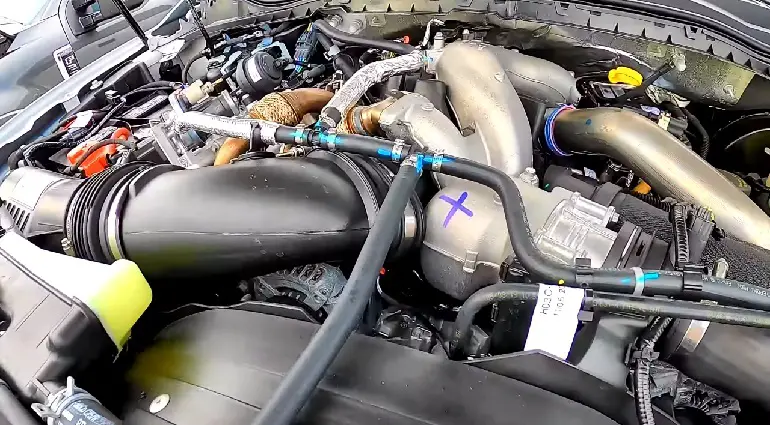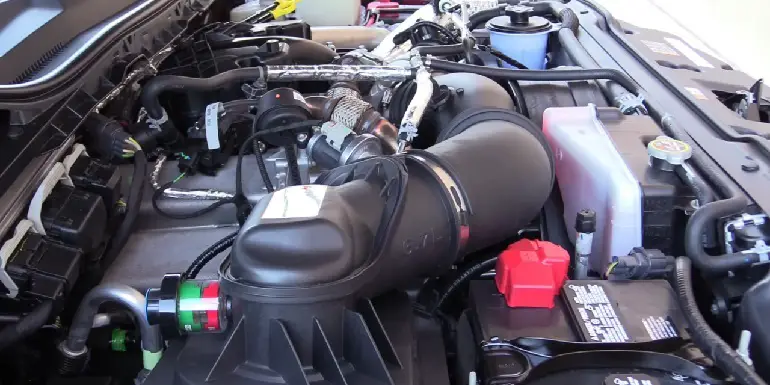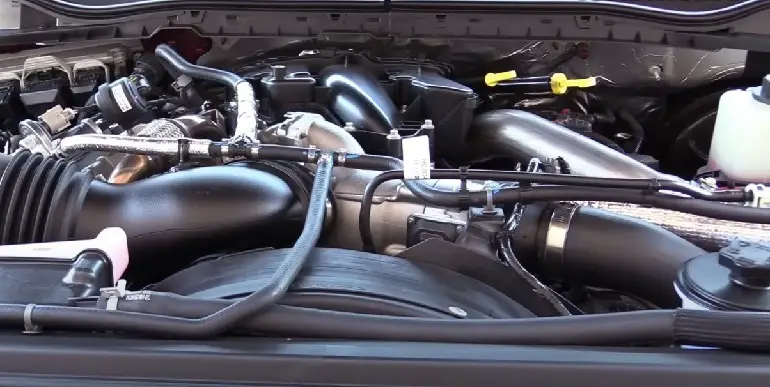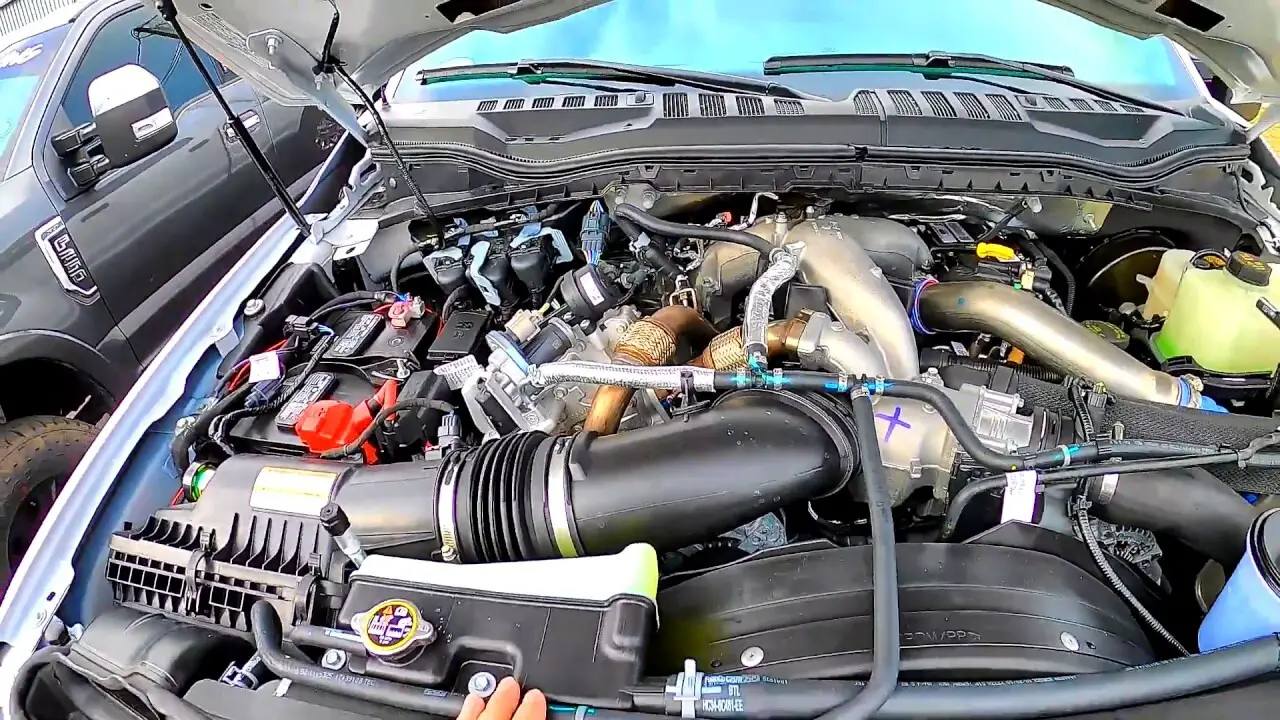Introduction
When it comes to trucks, my heart beats a little faster, and my eyes light up with excitement. I’ve always had a soft spot for the power and reliability of Ford’s 6.7 Powerstroke engine. But let me share a little secret with you – not all years of this mighty engine are created equal.
It is generally advisable to avoid the years 2011 to 2014 for the 6.7 Powerstroke engine due to various major problems associated with these specific models.
Trust me, I’ve learned this through personal experiences that have left me both exhilarated and disappointed. So, as we embark on this journey together, let me guide you through the years of the 6.7 Powerstroke that you may want to avoid.
Get ready for a rollercoaster of emotions as we navigate the highs and lows, sharing our passion for trucks and the desire for a ride that truly stands out.
About the 6.7 Powerstroke Engines

The 6.7 Powerstroke Engines, manufactured by Ford, are renowned for their exceptional power, durability, and towing capabilities. With advanced technologies and reliable construction, these engines deliver robust performance for heavy-duty applications.
Whether you’re towing trailers, hauling heavy loads, or seeking impressive power, the 6.7 Powerstroke Engines provide the reliability and strength you need.
Is a 6.7 Powerstroke Engine Reliable?
The 6.7 Powerstroke Engine is widely recognized as a highly reliable and durable engine, known for its robust performance and ability to withstand heavy-duty use.
It has a proven track record and is trusted by truck owners for its reliability in various applications.
So What Are Some of the Major Problems of the (2011–2014) 6.7 Powerstroke Engine, and Why Should You Avoid These Years?
We will delve into the major problems that have been reported with the (2011-2014) 6.7 Powerstroke engine, providing you with valuable insights to help you make an informed choice.
Injection Pump Failure

In the realm of diesel engines, few issues can evoke a sense of dread, quite like an injection pump failure. From personal experience, I believe that this is a situation no one wants to find themselves in.
The injection pump is the heart of the diesel engine, pumping life – in the form of fuel – to each of the engine’s cylinders. When it functions as it should, the harmony of power and efficiency it enables is truly something to marvel at.
However, when it fails, it can feel like life is being sucked out of your reliable engine, leaving it powerless and inefficient.
Injection pump failure can come on slowly, creeping up like a shadow. Maybe you notice your engine isn’t quite as sprightly as it once was. Maybe it’s using more fuel, or perhaps it’s harder to start. It’s these subtle signs that often foretell the storm that’s brewing.
EGT Sensor Problems
Exhaust Gas Temperature (EGT) sensor problems can pose significant challenges in a vehicle. This crucial sensor measures the temperature of the engine’s exhaust gases, providing essential data that helps control fuel injection, turbocharging, and engine protection functions.
When the EGT sensor fails or starts malfunctioning, it can lead to inaccurate readings. This inaccuracy can affect the efficiency of the entire fuel system, cause power loss, or even lead to damage from overheating if not addressed promptly.
Common symptoms of EGT sensor problems include poor engine performance, decreased fuel efficiency, and possibly a check engine light on your dashboard.
If you suspect an EGT sensor issue, it’s recommended to seek professional help for accurate diagnosis and repair to prevent potential engine damage.
Exhaust Valve Breaking
Exhaust valve breaking is a serious issue in an engine that can lead to substantial damage. This can occur due to various reasons, such as excessive heat, poor lubrication, or mechanical stress.
Symptoms often include loss of engine power, misfires, or abnormal engine noise. If a broken exhaust valve is suspected, immediate professional inspection and repair are necessary to prevent further engine damage.
Radiator Coolant Leaks
Radiator coolant leaks can be a troublesome issue that requires prompt attention. The radiator plays a crucial role in maintaining the engine’s temperature by circulating coolant throughout the cooling system.
When leaks occur, coolant levels drop, compromising the system’s ability to regulate temperature effectively.
Detecting radiator coolant leaks can be done by checking for visible signs of coolant pooling under the vehicle or monitoring the coolant level regularly. Additionally, overheating, a persistent coolant odor, or steam coming from the engine compartment may indicate a leak.
Various factors can cause radiator coolant leaks, including deteriorated hoses, worn-out gaskets, corrosion, or damage to the radiator itself.
Resolving the issue often involves identifying the source of the leak and replacing the damaged component. Prompt action is essential to prevent engine damage and ensure proper cooling system function.
If you suspect a radiator coolant leak, it is advisable to consult a professional mechanic for diagnosis and repair to address the issue effectively and maintain the longevity and performance of your vehicle’s engine.
Turbocharger Problems

Turbocharger problems involve malfunctions within a vehicle’s turbocharger system. These issues, which can range from reduced power and efficiency to increased fuel consumption and unusual noises, often stem from component failure, wear and tear, or poor maintenance.
EGR Cooler Clogging Up
EGR cooler clogging up is caused by the buildup of soot and carbon deposits, leading to reduced engine performance and higher emissions. It’s typically resolved by cleaning or replacing the EGR cooler.
Glow Plugs Issue
Glow plug issues are a common concern in diesel engines. When a glow plug malfunctions, it can cause hard starting, particularly in cold weather, and may result in poor engine performance or even misfires.
Such problems usually occur due to the glow plug’s wear and tear over time or due to electrical issues. To address these problems, a thorough diagnosis is necessary, which may eventually require the glow plug’s replacement for the engine to function optimally again.
FAQ’s
What Is the Best Year for a 6.7 Power Stroke?
When it comes to the 6.7 Power Stroke, I genuinely appreciate the refinements and advancements that Ford has made over the years.
Based on my extensive knowledge, many diesel enthusiasts hold the 2015-2016 models of the 6.7 Power Stroke in high regard due to their reliability and performance enhancements.
These years saw Ford introducing several updates that addressed earlier model issues while simultaneously boosting the engine’s power and efficiency. That’s why I feel confident recommending these model years to anyone looking for a trustworthy and robust Power Stroke engine.
Remember, though, that every purchase is unique, so it’s always wise to do your research and make sure the specific vehicle you’re considering meets your expectations and needs.
Should You Buy a 6.7 Powerstroke Engine?
If you’re seeking power, reliability, and impressive fuel efficiency, the 6.7 Powerstroke engine could be a good fit for your needs. However, it’s essential to also consider factors such as your budget, maintenance costs, and the engine’s history if you’re buying used.
Always ensure you’re fully informed about any common issues and the engine’s overall condition before making your purchase.
What Years of Ford Diesel Engines To Avoid?
While Ford has produced many reliable diesel engines over the years, certain model years have gained a reputation for having more issues than others.
Specifically, the 6.0L Power Stroke engines produced from 2003 to 2007 have had well-documented reliability problems and might be best to avoid.
As always, individual experiences may vary, so it’s crucial to thoroughly inspect and research any used engine before purchase.
Final Thoughts
Drawing from a wealth of knowledge and experience, if there’s one piece of advice I could give regarding what year 6.7 Powerstroke to avoid, it would be to approach the 2011 model of the 6.7 Powerstroke with a measure of caution.
This model year was the first generation for this particular engine, and, as is often the case with inaugural editions, it had a few bumps along the way. Numerous stories have been shared within the community about issues cropping up more frequently with this model, often leading to a trip to the mechanic.
While not every 2011 Powerstroke will give you a headache, the risk, from what I’ve gathered, seems higher.
In contrast, Ford seems to have taken these early learnings in stride, as later models of the 6.7 Powerstroke exhibit marked improvements. They embody the robustness, power, and reliability that one would expect from the Powerstroke name.
Furthermore, you should also gain valuable insights to make informed choices by exploring the7.3 Powerstroke years to avoid, minimizing potential risks, and maximizing your decision-making process.
In the end, the choice is deeply personal and depends on your circumstances and tolerance for risk. But remember, knowledge is power, and being informed about potential pitfalls is the first step toward making a decision you won’t regret.


